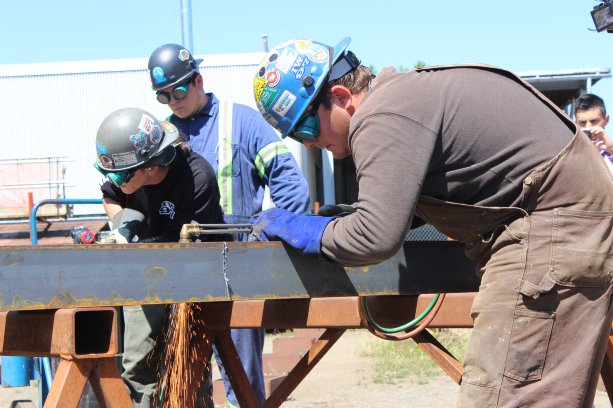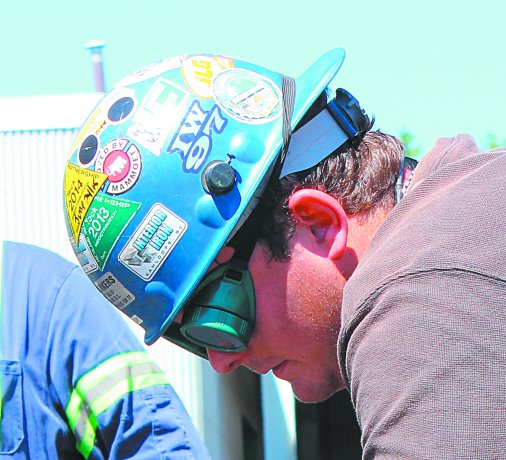The biggest story of the year was the looming job crunch affecting the industry.
Few other issues have such high stakes or have spurred government and industry leaders to take such widespread action.
Trying to find enough skilled workers as massive energy megaprojects break ground or start to come online has weighed heavily on industry officials and governments, especially in Alberta’s booming oil sands and for B.C.’s developing LNG industry.
An aging workforce and a massive increase in demand will make the next few years difficult, data and industry officials say.
In B.C., more than a dozen LNG projects are working their way through the approval process, with many likely to make final decisions in the next several years.
It’s expected that if even a small handful of these projects are given the green light, a huge labour crunch will follow.
According to the Industry Training Authority (ITA), data shows that a scenario with five LNG plants would see a requirement of more than 20,000 trade workers by 2018.
One of the major forces working to address the coming skills shortage is ITA. The authority is the Crown Corporation responsible for leading B.C.’s trades training system, including developing and implementing training programs and services that respond to industry need, and issuing Red Seal and other trades credentials to qualified workers.
The ITA has had a busy year.
In the fall, it launched its Transition Plan and An Action Plan for LNG Trades Training, essentially reorganizing the corporation to focus on prepping for the skills shortage.
The group’s action plan intends to accomplish what has become the ITA’s mantra: the right trades, with the right training, in the right areas at the right time.
The plan will continue to evolve with the ITA receiving input from industry on the confirmed actions, and consulting with LNG stakeholders on developing proposed actions in conjunction with assessing available resources.
This includes high-demand scenarios for construction labourers (including craft workers), steamfitters, pipefitters, sprinkler system installers, gasfitters, industrial electricians, millwrights, machinists and welders.
The ITA has already created a new Red Seal designation for construction craft workers, and partnered with B.C. schools to attract teens to the trades and make sure funding and apprenticeships are available for them.
There are also more apprenticeship advisors on the ground and advisory groups for key sectors are being formed.
"I think that we are very satisfied with the progress that has been made in 2014," said Gary Herman, ITA CEO.
According to the ITA, there are 41,000 registered apprentices. That includes 4,200 youth apprentices, over 3,000 current foundation program students, and over 9,500 registered employee sponsors.
"We are well on the way," said Herman. "There is still much work to do, and 2015 will be a key year."
Alberta is in a tough spot as well.
According to a recent report by the Petroleum Human Resources Council, expansion-related hiring for both construction and oilsands operations is projected to reach about 98,380 jobs over the next decade.
Line Porfon, vice president of government relations at Merit Contractors Association in Edmonton, said more journeymen and third and fourth year apprentices are needed.
Many companies are wary to bring in less experienced apprentices because of the time and effort they require. Instead, many companies end up competing for the same skilled workers.
"There was a fair bit of stealing happening between companies in Alberta," Porfon said. "Companies need to recognize that they need to invest in human capital."
Part of the solution is getting information to people when they are starting to think about their careers.
Porfon said some school boards are in the early stages of starting initiatives to educate teens about trades as a career option.
"The education (system) is barely focused on trades as being a real option for a career," Porfon said.
"University is a great option, but it’s not the only option."
She said that while the education system is shifting, it is a slow shift and she doesn’t expect major changes for the next few years.
One of the more controversial issues affecting the province is the Temporary Foreign Worker Program (TFW). In June, the federal government overhauled the program with stricter criteria, making it harder for employers to get TFWs.
The process also got more expensive, with the fees bumped to $1,000 per worker.
The government has explained that the rules are to ensure Canadians are first in line for jobs, while some employers have complained they make a competitive labour market even more difficult, especially for smaller companies.
Porfon said the program has a huge effect on Merit members, which sees up to 75 per cent of contracts utilize it.
While Porfon recognized concerns about abuses, she said most companies are extremely diligent about hiring Canadians first and the changes are going to cost them business.
"The response was a bit of overkill as far as construction is concerned," she said.
The Canadian Construction Association has also been critical of the changes. The association views the TFW program as a stop-gap measure, which allows industry to keep pace with rising demand across Canada for construction services.

The western provinces have undertaken a number of initiatives to combat expected skills shortages.
Photo: Russell Hixson"










Recent Comments
comments for this post are closed